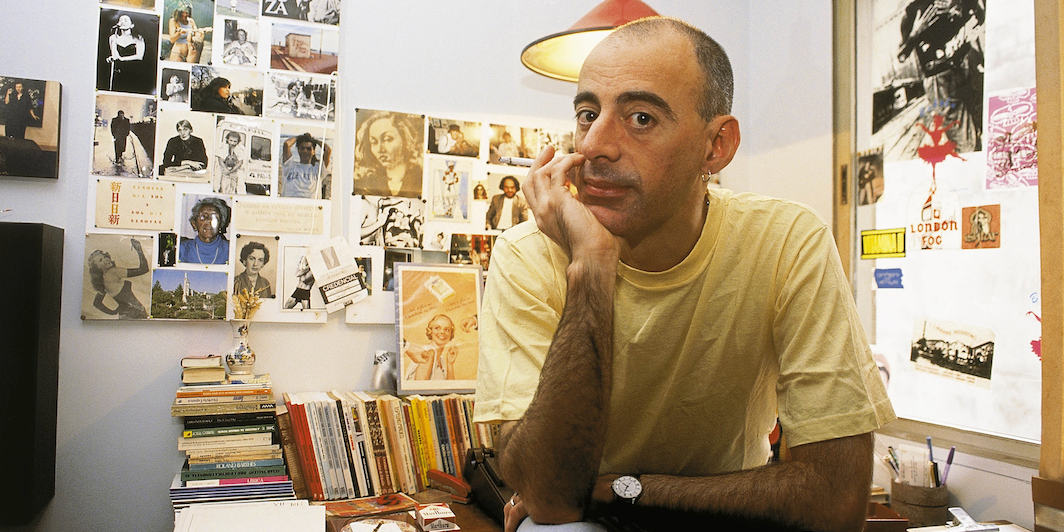MUST A NOVEL ENGAGE with contemporary life? One still finds the call, as tenacious as cliché, for novels that “speak to the moment we are in,” “work out society,” or otherwise “interpret the now,” insisted upon regularly in marketing copy and pieces of criticism, not to mention on Twitter. A better question to ask is whether a novel can do anything but react to—or reflect—contemporary life. This one is characteristic of a certain kind of Marxist criticism, which seems at times to make a point of noting that novels engage with the “now” regardless of their authors’, or readers’, intentions.
- print • Sep/Oct/Nov 2022
- excerpt • July 25, 2022
“Reality is not a given: it has to be continually sought out, held—I am tempted to say salvaged,” John Berger writes in his 1983 essay “The Production of the World.” “Reality is inimical to those with power.”
- review • July 22, 2022
The narrator of Jordan Castro’s debut novel, The Novelist, is a writer and a recovering heroin addict. Newly sober, he feels as if he’s seeing the world for the first time, and all the ordinary things he overlooked as an active addict are now taking on a surreal quality—the way the light plays on the bedroom wall alone seems to be too much. He is trying to write a novel about his once-humorous, pathetic life as an addict, except he is now driven by a more common addiction: checking Gmail and scrolling through Twitter. Sobriety gives him a new existence,
- review • July 14, 2022
The austerity of painting stripped down to reveal the threadbare lives of the artists; domestic strife heighted to the point of sublimity; personal memoir caressed by the ancient lunacy of myth; comic-book characters trespassing at the gates of high modernism; the love of books and cats. Frederic Tuten’s trajectory through letters has been uncategorizable, heteroclite, and consistently at odds with the prevailing fashion—so much so that he comes across less as a member of any extant school of literature and more as a Dada or Pop artist who happens to work primarily with words. His new story collection, The Bar
- review • July 1, 2022
A FRIEND OF MINE from what feels like a lifetime ago once introduced me to her uncle during dinner at her mom’s house. That he was avuncular in all the classic ways—huge, meek, seemed like he had a life defined by extreme silence—was mostly unremarkable, but what lingered from our meeting was his decision to forcibly share his two clearest, greatest fantasies with a table largely made up of children. The first, he said, extending a finger over some entreé meat, was to meet supermodel Christie Brinkley before he faced the grave. The other—up went another finger, eyes and heart
- excerpt • June 27, 2022
It’s always been a sport to argue about the canon. I’ve never been one for sports.
- excerpt • June 14, 2022
She is biting her nails when I open the door, her purse pressed tightly against her breasts. As usual, I think as she walks in, head down, and sits in her usual place, Mondays and Thursdays, five o’clock: as usual. I shut the door, walk over to the armchair in front of her, sit and cross my legs, making sure I pull up my pants first so they won’t have those awful creases on my knees. I wait. She doesn’t say anything. She seems to be staring at my socks. Slowly, I pull a cigarette out of the pack in
- print • June/July/Aug 2022
EARLY IN ELIF BATUMAN’S NEW NOVEL Either/Or, she quotes a blurb on the front of Kazuo Ishiguro’s An Artist of the Floating World, extracted from its 1986 review in the New York Times. “Good writers abound—good novelists are very rare,” the critic theorizes, deeming Ishiguro “not only a good writer, but also a wonderful novelist.” For Either/Or’s narrator, the distinction comes as a shock. Since she was young, Selin has aspired to become a novelist, and she views much of her life to date as training for that vocation. Assessing herself according to the reviewer’s implied rubric, Selin realizes that
- print • June/July/Aug 2022
A SPECTER IS HAUNTING AUTOFICTION. The specter of ripping off your life for your novel and not making a whole goddamn thing about it. Elizabeth Hardwick’s unnamed narrator spent her Sleepless Nights in Elizabeth Hardwick’s apartment and it worked out fine for both of them. Roth had Zuckerman and, later, “Roth,” and later still Lisa Halliday had “Ezra Blazer.” There have been abundant Dennises Cooper, Joshuas Cohen, and Dianes Williams. Sebald and Bellow—just saying the names should be enough. Jamaica Kincaid gave Lucy her own birthday. Then you’ve got the New Narrative movement of the ’70s and ’80s, plus a
- print • June/July/Aug 2022
PUBLISHED IN 1974, Patricia Nell Warren’s best-selling novel The Front Runner, about the same-sex intergenerational romance between Harlan Brown, a college track coach, and Billy Sive, his star athlete, capitalized on dual booms from that decade: the running craze and the growing crossover appeal of LGBTQ+ literature.
- print • June/July/Aug 2022
ON APRIL 12, Joyce Carol Oates, who’s had a surprise second act as a social-media provocateur, tweeted, “Much prose by truly great writers (Poe, Melville, James) is actually just awkward, inept, hit-or-miss, something like stream-of-consciousness in an era before revising was relatively easy.” Like much Tweeting by truly great Tweeters, Oates’s hot take struck a nerve because it reflected the zeitgeist; whatever one’s feelings about the nineteenth-century masters, one must concede the current vogue for tightly structured novels, rendered in lucid, well-modulated prose. For a long time now, American fiction has not been characterized by any one school or approach,
- print • June/July/Aug 2022
IN 2014, the novelist and essayist Cynthia Ozick reviewed the collected fiction of Bernard Malamud for the New York Times. Ozick adores her slightly older contemporary for his bruised moral seriousness. The essay contains just one asterisk: “The reviewer has not read and is not likely ever to read ‘The Natural,’ a baseball novel said to incorporate a mythical theme. Myth may be myth, but baseball is still baseball, so never mind.”
- review • May 5, 2022
Six-year-old Marina Salles dubs her grandmother’s house on the salt-swept Monterey Peninsula “the Plastic Palace.” Protective runners cover the carpets and kitchen table, encased and safeguarded from spills. The Plastic Palace is a special nickname, something shared between Marina and her mother, Mutya, who are living there with her grandmother, Lola Virgie, in 1982. Love, here, peeks out from corners: from the “sharp tips” of the plastic, from Lola’s routines and regimens. Mutya evades domestic responsibilities, spending weekdays at college and leaving Marina in Lola’s care.
- review • April 28, 2022
I spent the last days of 2019 with family in a Panamanian duplex, across the street from a “village” of high-end apartments where men worked the yards. Fernanda Melchor’s new novel, Paradais, takes place at a Mexican luxury development that shares the Panamanian complex’s name: Paradise. The coincidence is banal, if illustrative. “Páradais,” the phonetic rendering of an English word, is a clichéd, empty signifier of colonial “luxury,” sort of like an American apartment complex called “Royal Glen” or “High Manor.” But Melchor’s novel owes less to the unimaginative naming conventions of developers than to its chief intertext: José Emilio
- review • April 14, 2022
There is a Shinto myth called kotodama that implies there are divine powers in the Old Japanese language—koto meaning “speech” or “word” and dama meaning “soul” or “ghost.” In this cosmogony, different words were believed to contain different qualities: a positive word could bring positive spirits and a negative word could wake up the demons inside. Practitioners of Shinto would erase loanwords from Chinese during their rituals to make their prayers as linguistically “pure” as possible. Nowadays, however, if you google kotodama, the internet returns links on the New Age potential of Aikido, manifesting psychology, and a video game called
- print • Mar/Apr/May 2022
THE WRITER AND THE NOVELLA were both new to me: two plosive proper nouns and one personal pronoun, adding up to just three potent monosyllables. Kay Dick (1915–2001): an indelible name, especially for a lesbian. They: her ninth book (and sixth work of fiction), published in 1977, and best summed up, per text on this slim volume’s title page, as “a sequence of unease.”
- print • Mar/Apr/May 2022
IN AN ORDINARY CLASSROOM, ON AN ORDINARY DAY in an ordinary English childhood, a girl points at a box of books and says, “Look.” Look, she says, and another girl gets up, retrieves one of the school-owned hardbacks, and pushes it into her chest: “It was your idea.” The first girl is the narrator of Checkout 19, never named, and the second is one of her classmates; the high school moment is being remembered by the narrator, embroidered even in the remembering. Look, the grown-up narrator explains, “no child says ‘Look’ without meaning for something to happen. A child’s eyes
- print • Mar/Apr/May 2022
IN AN ESSAY ABOUT NATALIA GINZBURG, the Chilean novelist and critic Alejandro Zambra writes, “When someone repeats a story we presume they don’t remember that they’ve already told it, but often we repeat stories consciously, because we are unable to repress the desire, the joy of telling them again.” Of course the compulsion to retell a story is not always situated in joy’s lofty terrain. We might repeat a story in the hopes of shrinking it to a manageable bite, or because it reminds us of another story, or to shine up disagreeable aspects of our lives, or to mock
- print • Mar/Apr/May 2022
“ALL WOMEN ARE NOT UNHAPPY,” the Japanese writer Yūko Tsushima wrote in the Chicago Tribune, but women are made to suffer more “just because they are women.” By design, a system animated by capitalism and heteropatriarchy is especially cruel to single mothers. I remember nearly nothing of my childhood, yet I harbor acute recollections of my mother waitressing or bartending while I perched primly atop a barstool, memorizing my Mariah Carey cassette and learning what humiliation borne of economic necessity looks like. The phrase “to make ends meet” has one origin in dressmaking, meaning to gather the least amount of
- print • Mar/Apr/May 2022
IN STORIES ABOUT INTERSTELLAR TRAVEL, space usually wins out over time. The accounting of minutes and hours is too petty, too human, for the vast distance between one star and another; some genres just won’t accommodate the clockface. This is true of Tarkovsky’s Solaris, in which mad astronauts prove incapable of distinguishing between past and present, as well the Swedish poem and film Aniara, about a spaceship destined for a future of endless drift—which is to say, no future at all. Few places are as interminable as outer space, which urgently raises the question of where one is while rendering the



















